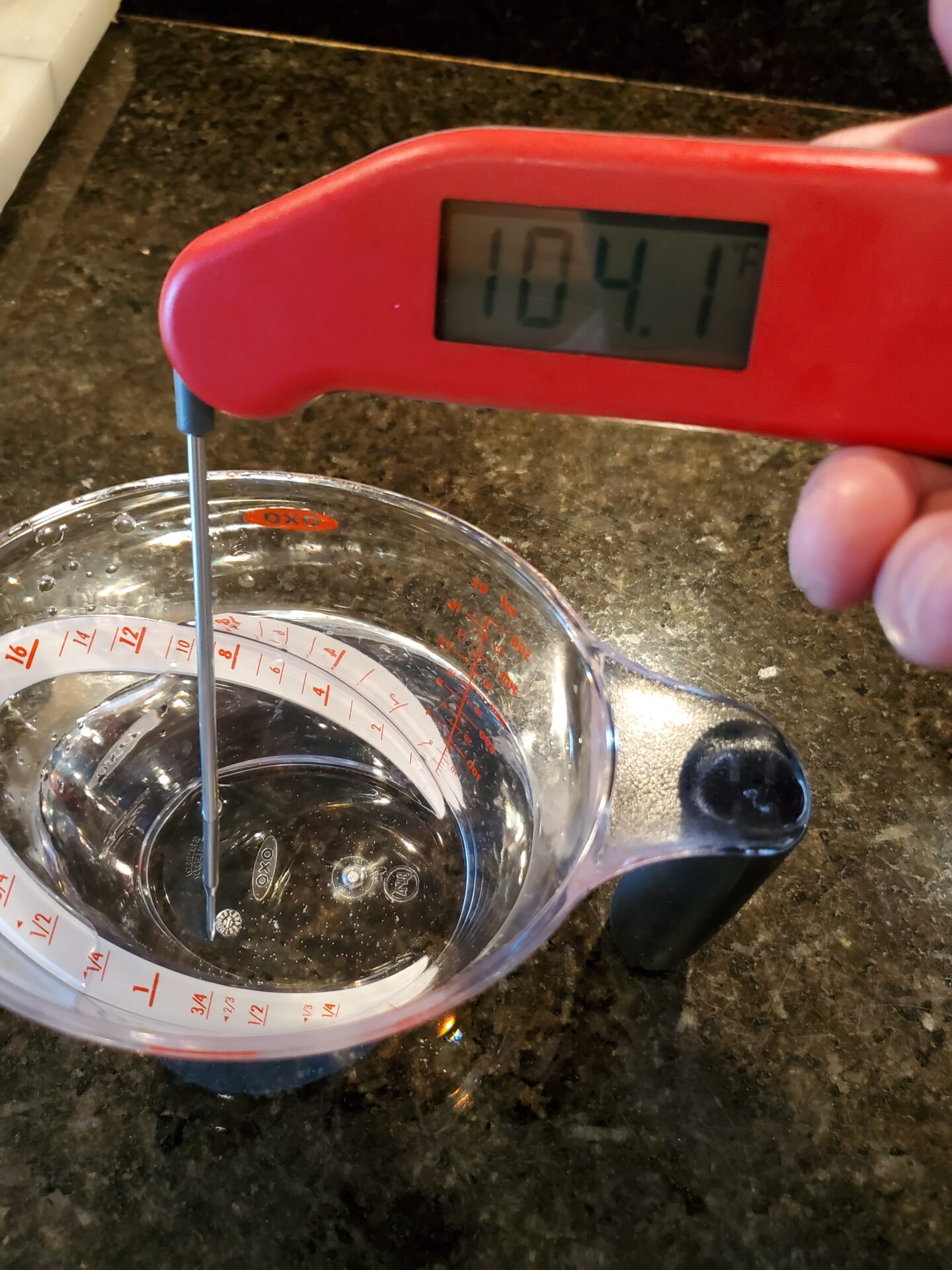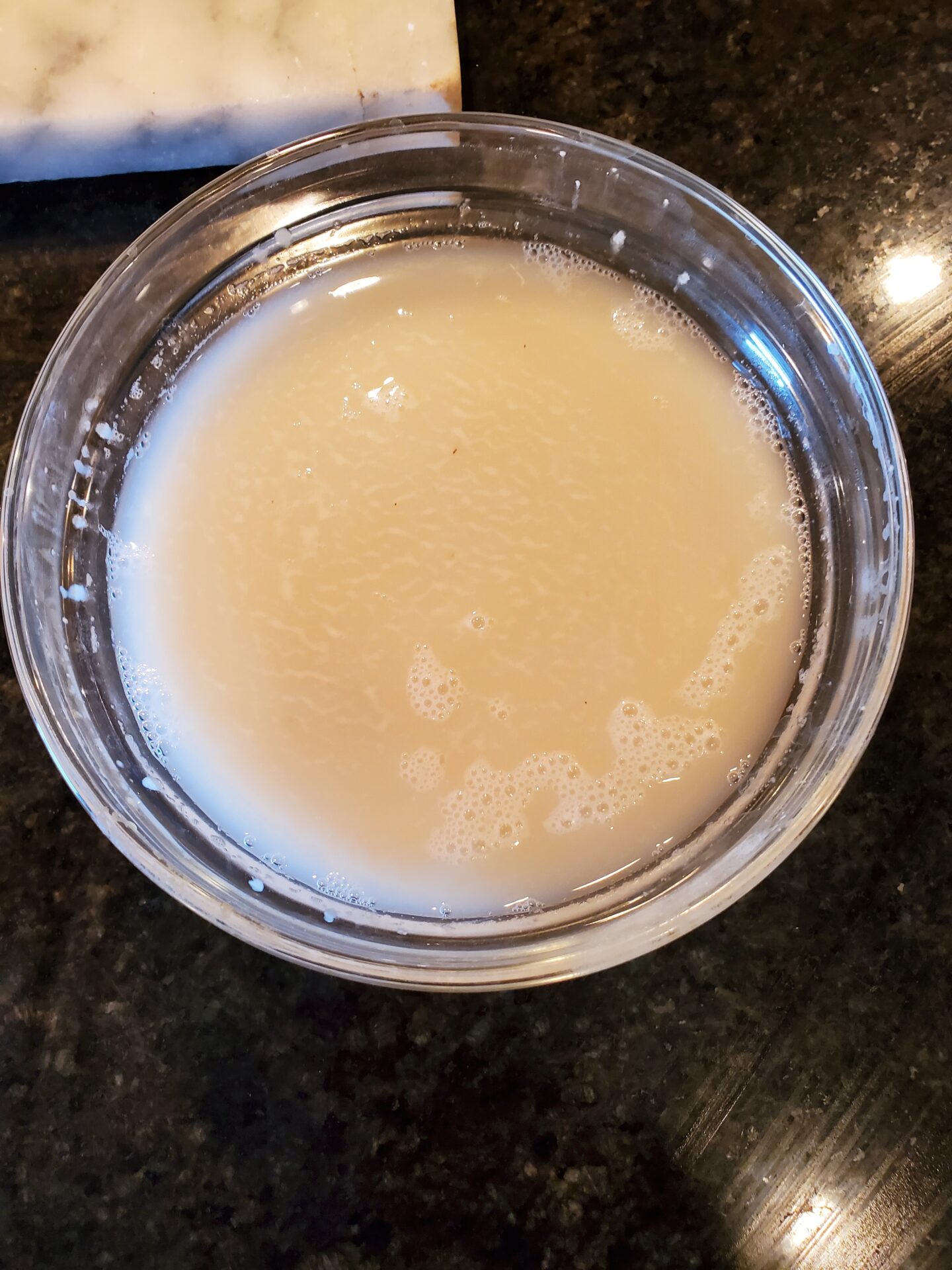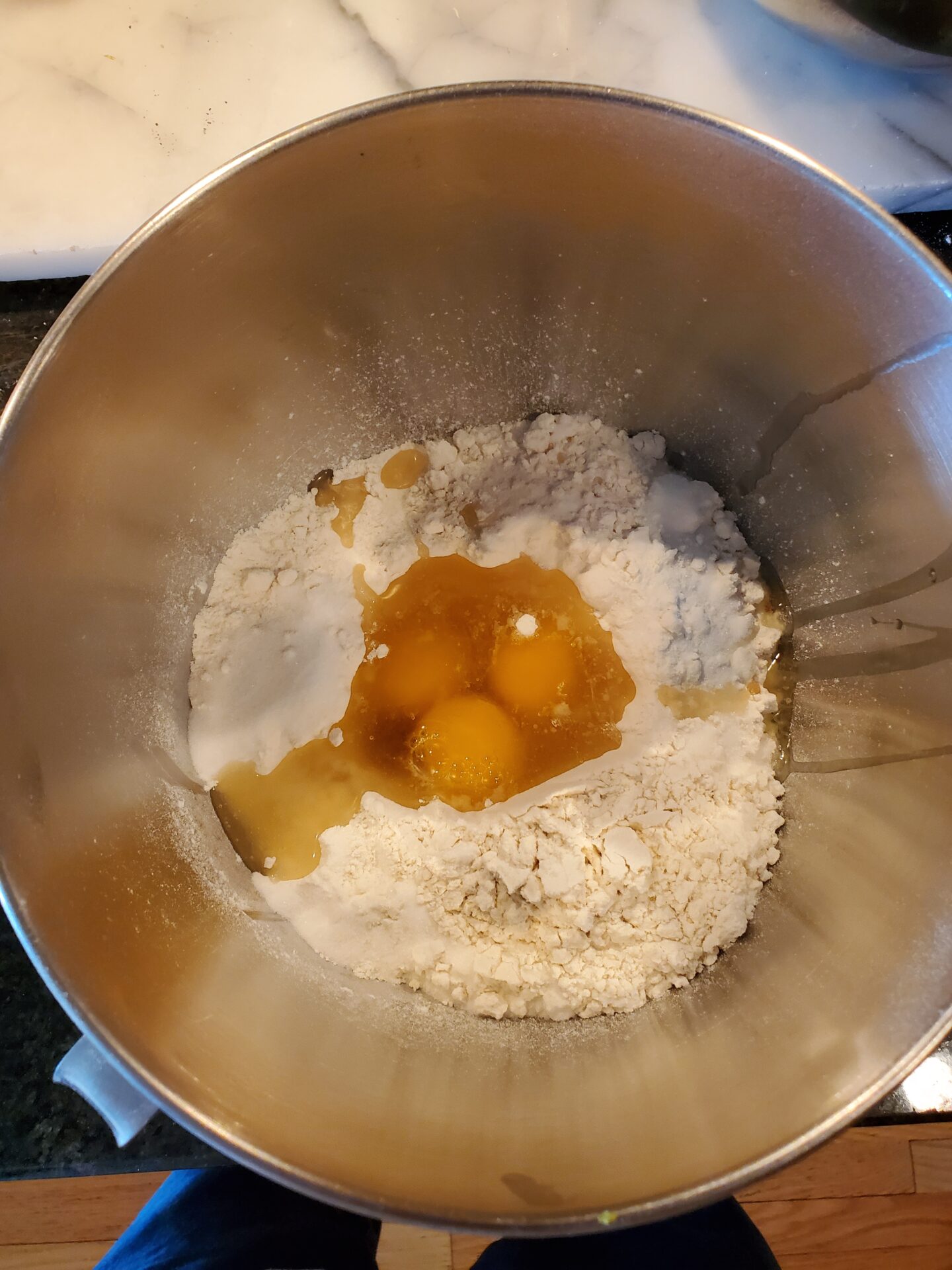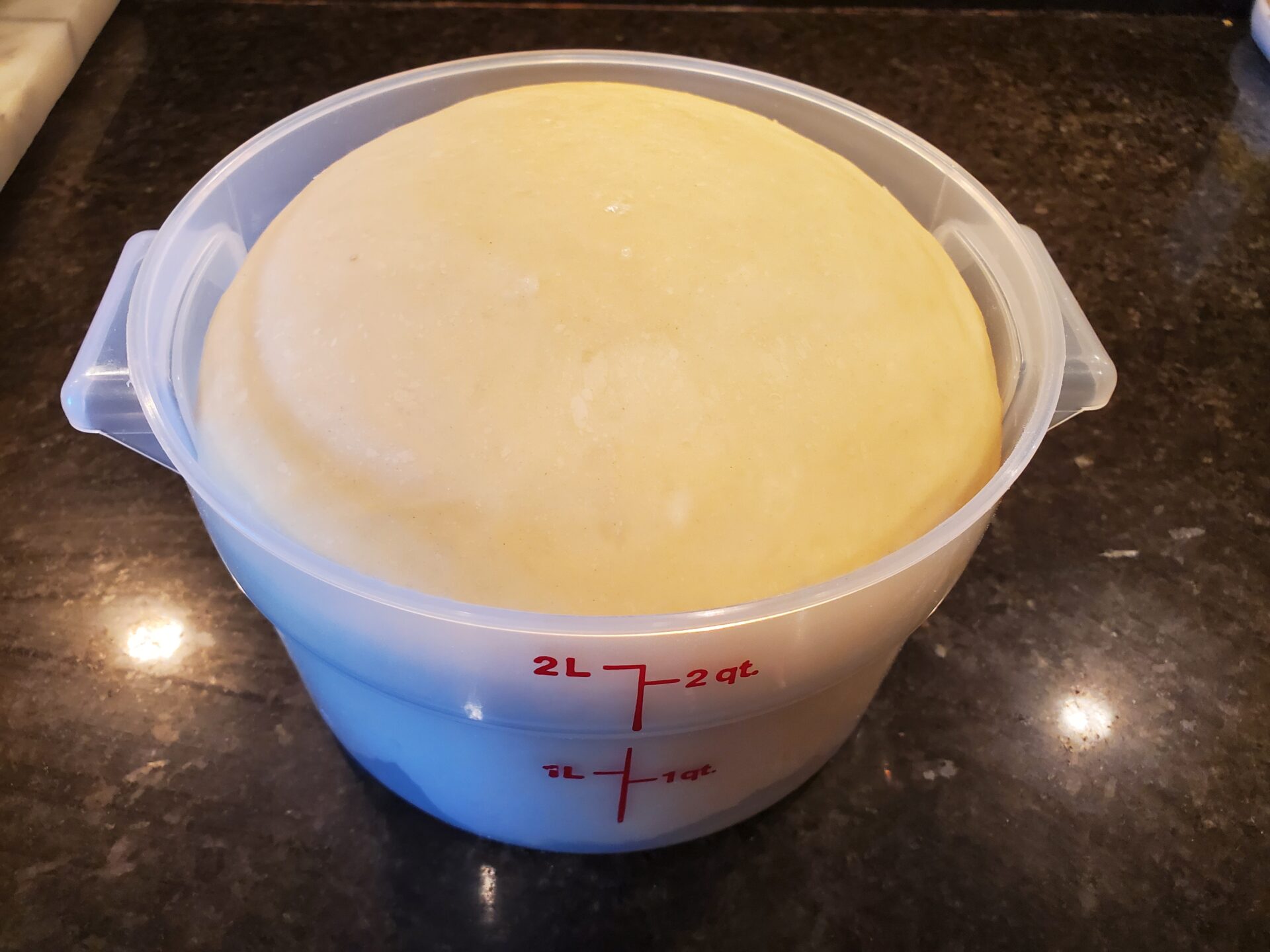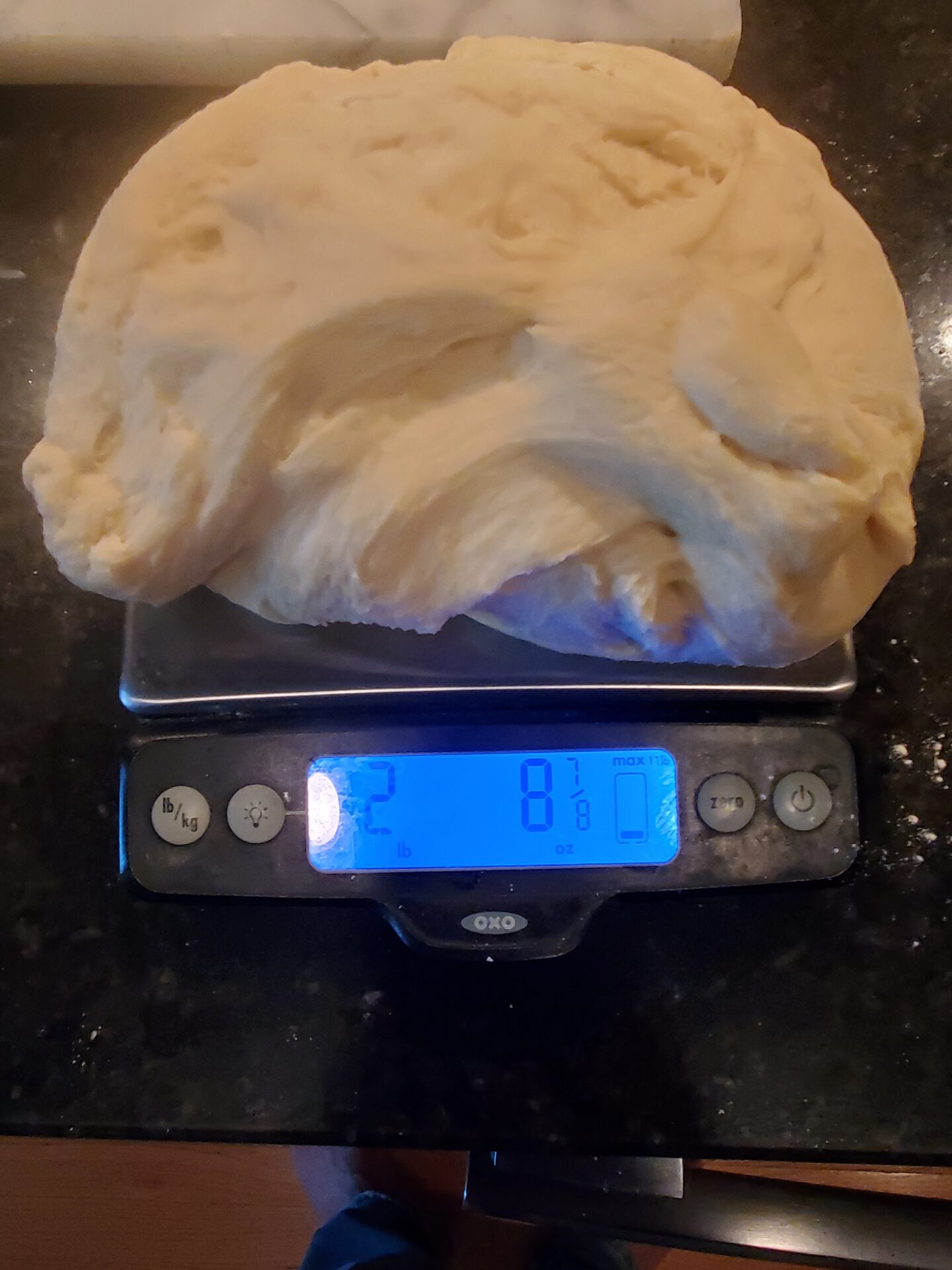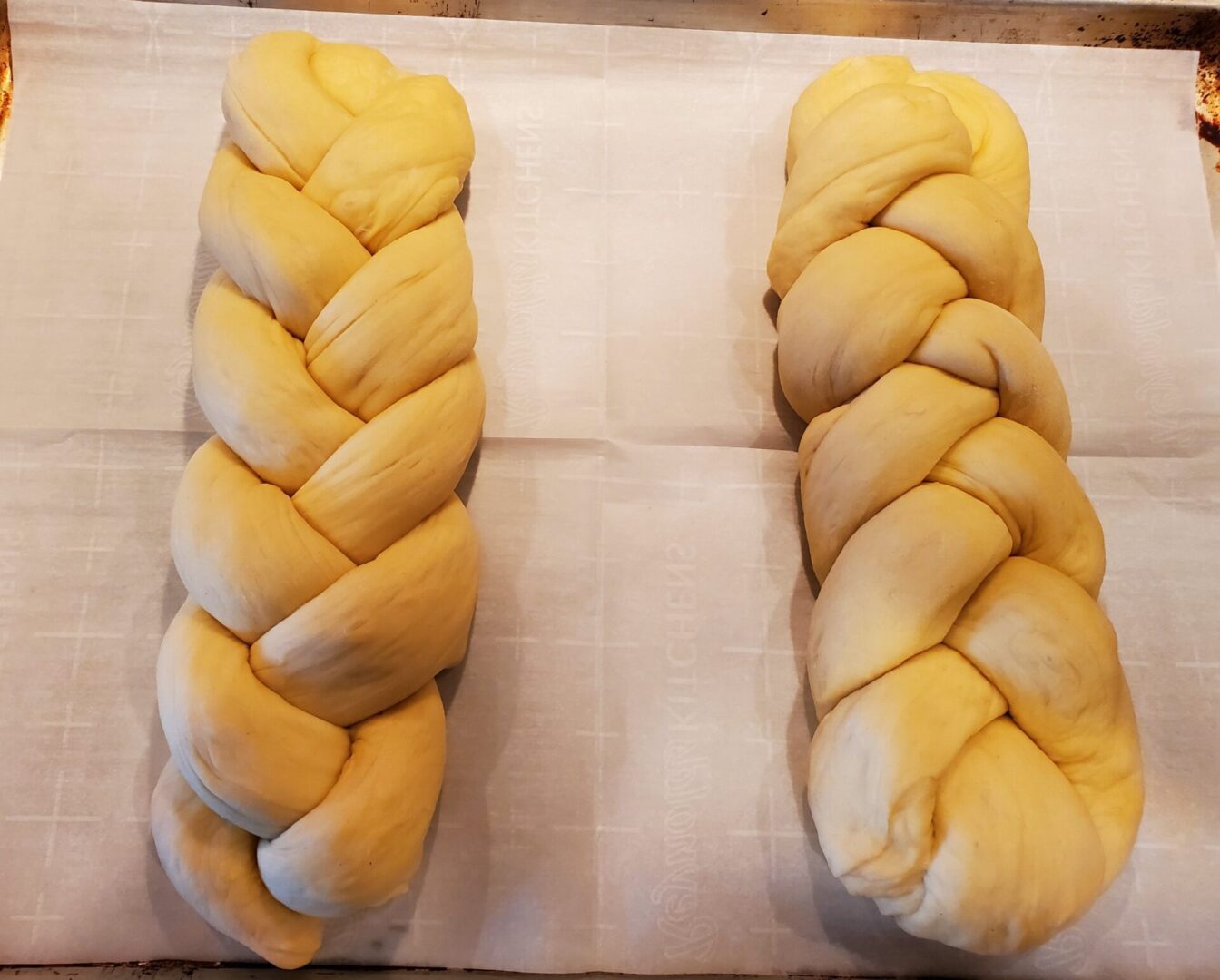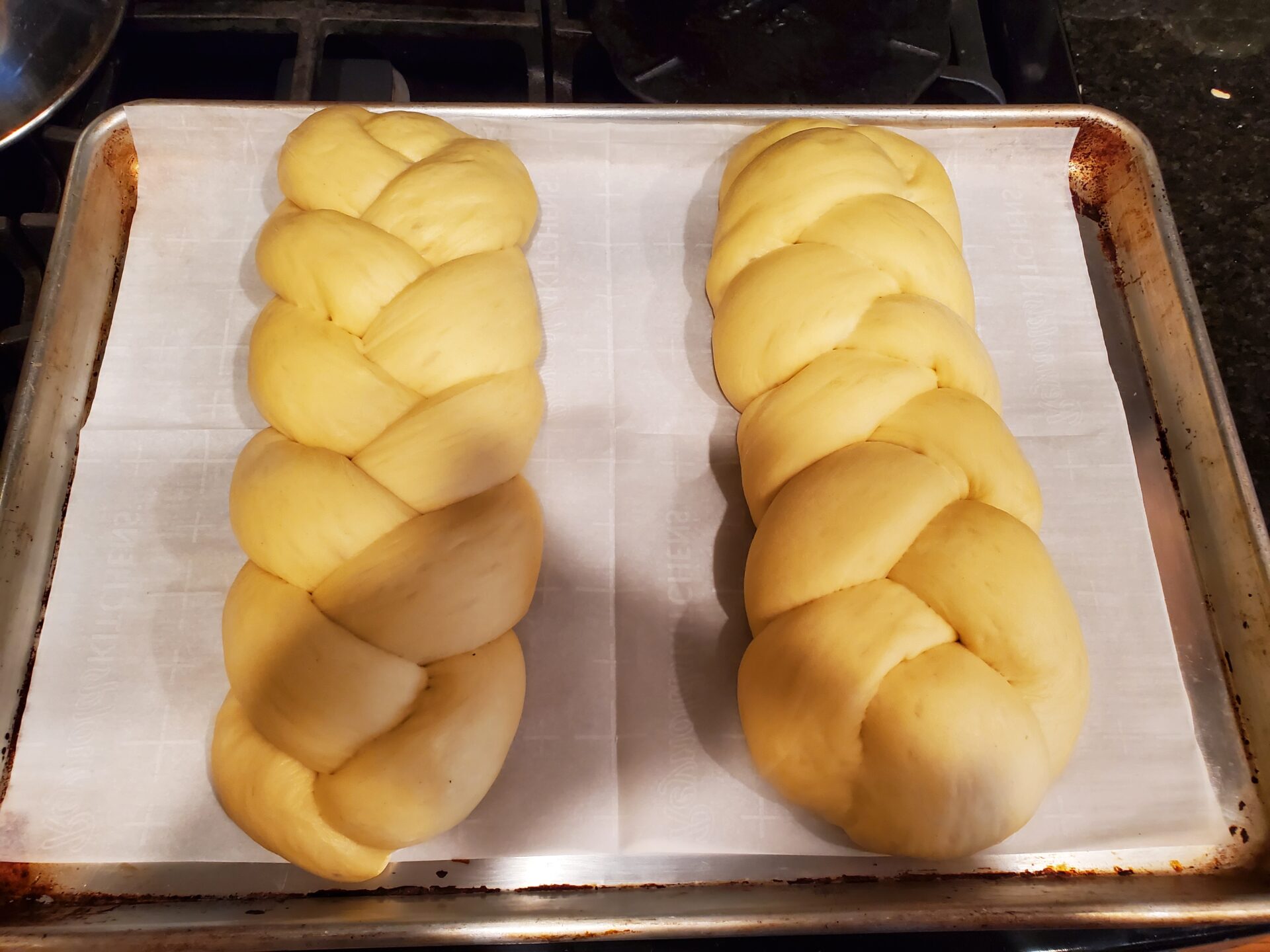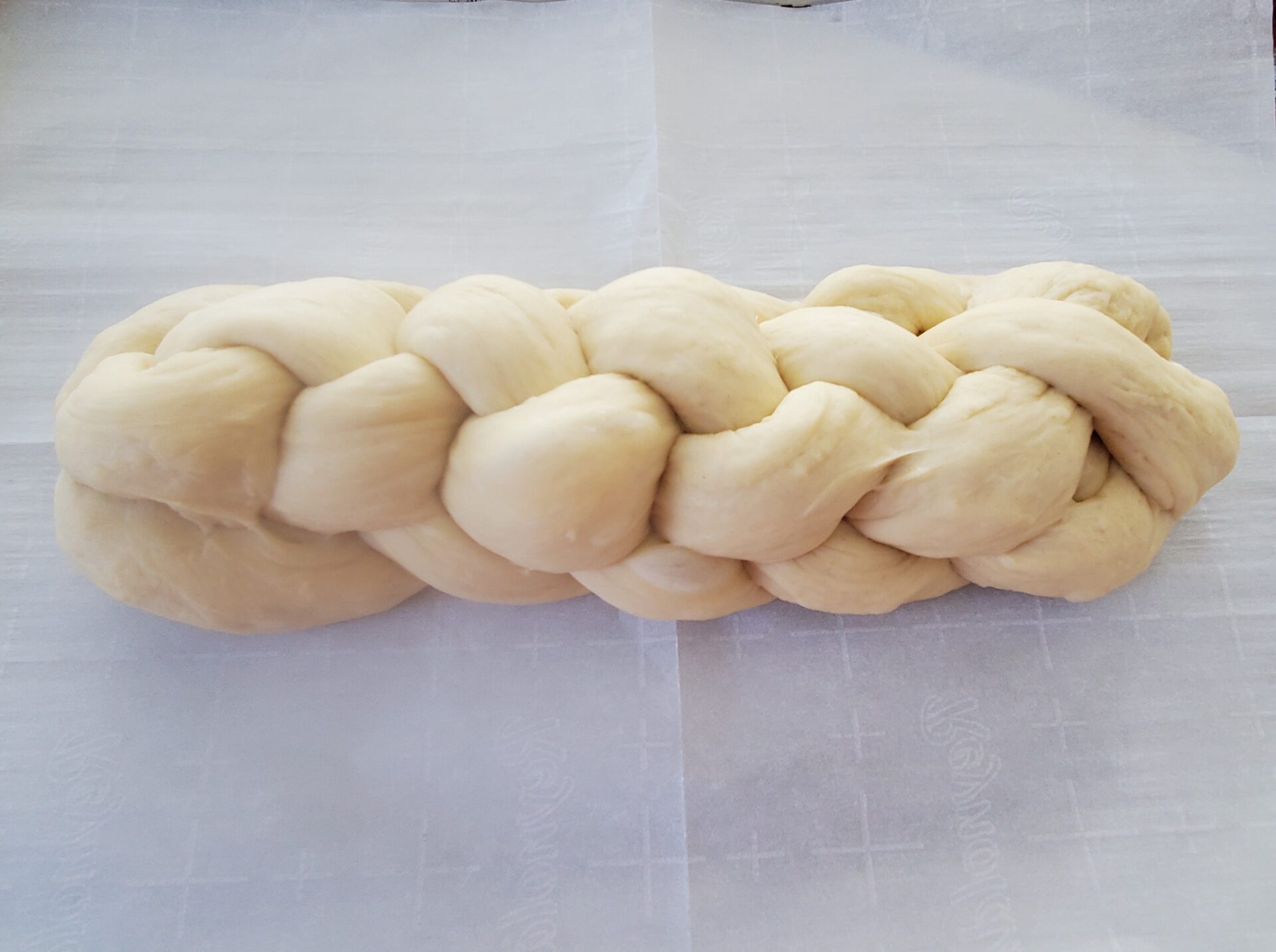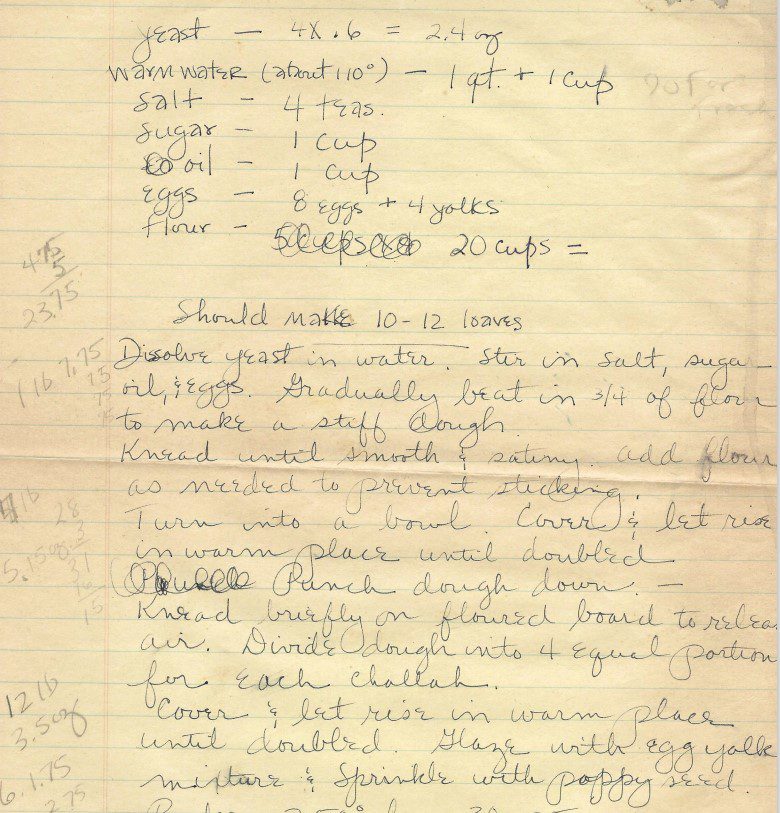Challah
The Challah recipe search represented the unofficial beginning of the Baking Project. Which is fitting as Challah is a happy and deeply embedded food memory of mine.
Growing up, Friday night dinner was special as it was the beginning of Shabbat, the Jewish day of rest and reflection. Among other things, there was always a fresh loaf of Challah on the table, from one of the three bakeries in our little nook of Queens.
Also on the table was a classic Shabbat candelabra with two candles. As the five of us came to the table for dinner, my mother would light the candles, close her eyes as she recited the blessing, then my father would slice the challah as we all recited the blessing over bread. We weren’t always the most harmonious, but at this moment all seemed right in our world, we were family, and it’s a memory I cherish.
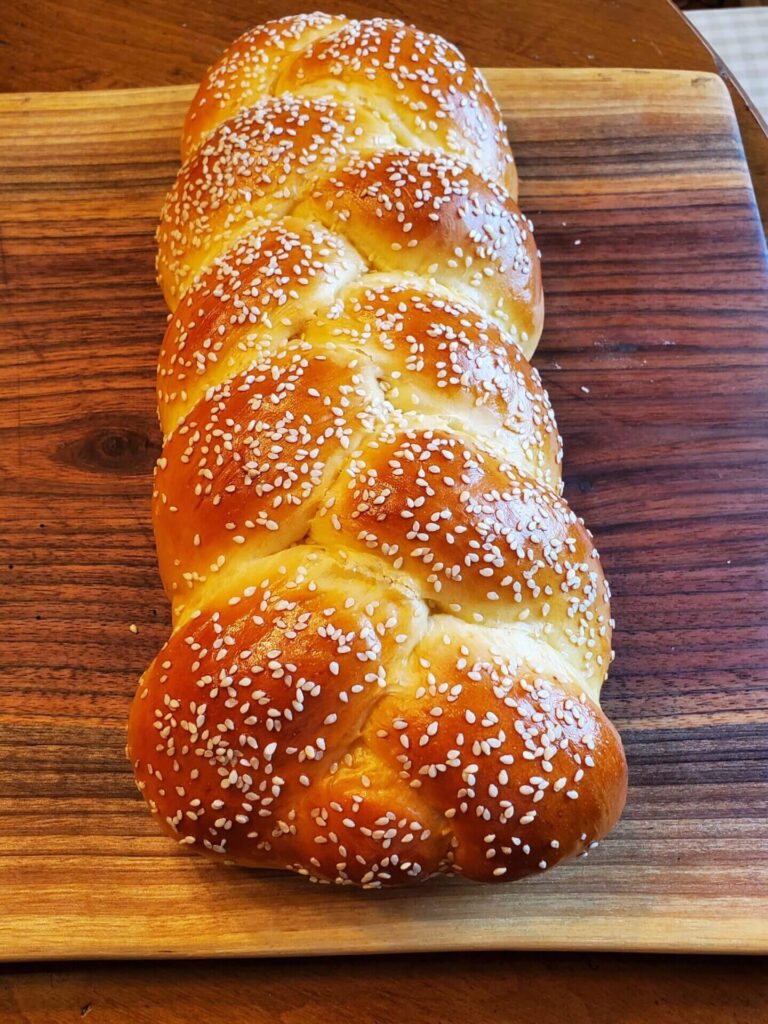
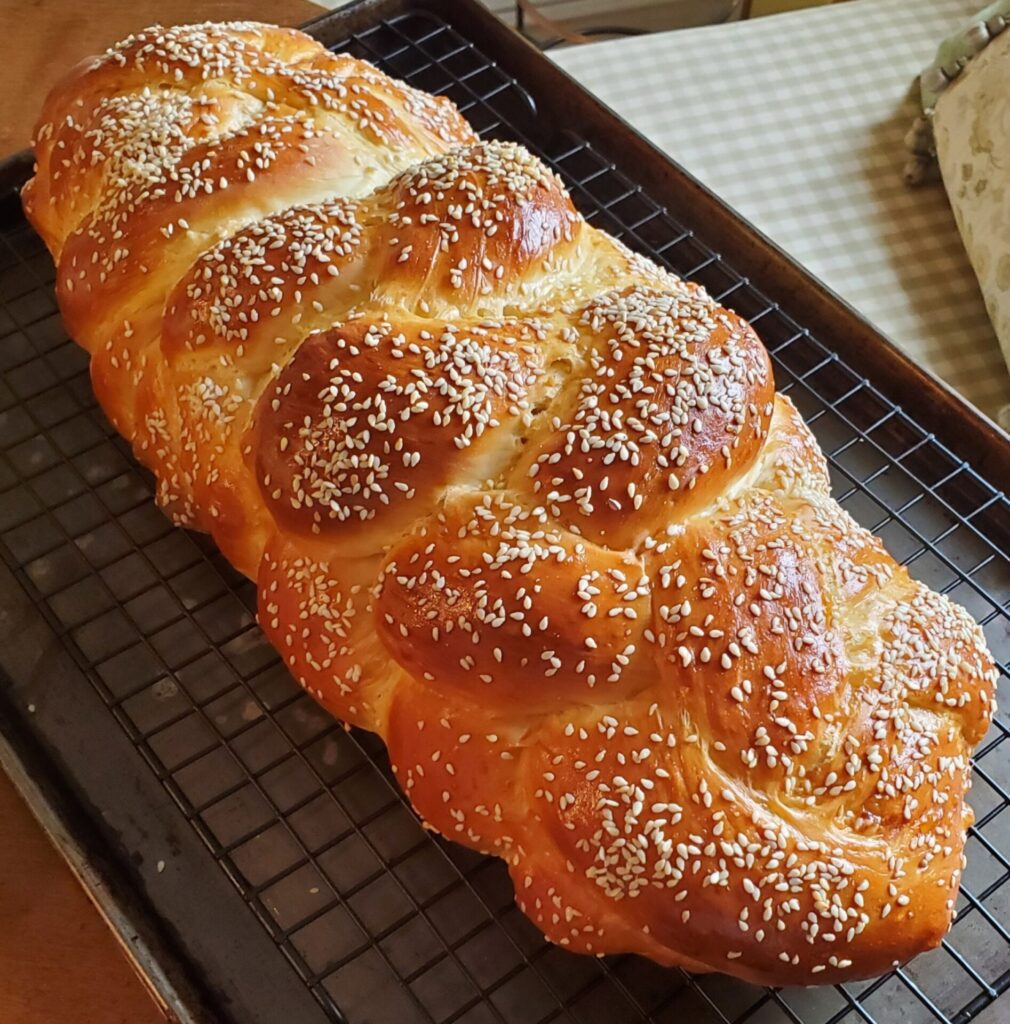
Over fifty years later, in early summer 2019, a group of friends decided to get together for dinner one Friday night a month to celebrate the beginning of Shabbat. It was a wonderful gathering of friends, of both American and Israeli descent, where everyone was able to relax, talk, and take a deep collective breath at the end of the week.
As a newcomer to the group, and the only one with a professional baking and culinary background it was important to me to bring something special to the table. The childhood Challah memories were still strong, and given that it is the symbolic heart of the repast, this is where I focused my baking energies.
I began testing recipes from Joan Nathan, the Julia Child of Jewish cooking, and Michael Solomonov’s Zahav cookbook. I would bring them over to my partner’s house for a pre-dinner challah tasting. All were good, but not at the “best of” level.
Then, while looking through old recipe files, I came across a yellowed piece of paper with a draft of the original recipe used years ago in my Martha’s Vineyard pastry shop. Several Fridays during the summer, we would bake around 10 Challahs (Challot) and they would sell out. I scaled down the recipe, made a few minor adjustments, and tried a test batch at the end of the week. We tried it that evening, and the consensus was clear this was the “best of” I had been looking for.
In the early days of the pandemic, this was my most shared recipe, and what a joy it was to communicate with family, friends, and children of friends, with recipe tips for a bread that is such an important part of our common heritage.
Challah
| Yield: 2 loaves | # of Servings: 20 | Method: Straight dough |
Ingredients:
- 1 packet (.25 oz / 7 g) active dry yeast
- 1 ¼ cups warm water, approx. 104°F
- 4 cups (1.2 lb / 545 g) bread flour
- 1¼ tsp (0.25 oz / 7 g) kosher salt
- ¼ cup (1.85 oz / 53 g) sugar
- ¼ cup (2 fl oz) canola oil
- 2 large eggs
- 1 large egg yolk
- 1 cup + 1tbl (5 oz / 142 g) bread flour
- 1 large egg
- Sesame or poppy seeds, as needed
Tools and equipment needed:
- Stand mixer with dough hook, or large mixing bowl.
- Baking sheet (12″ by 18″ half sheet pan preferred), parchment paper or silpat.
- Dry and liquid measuring cups, tablespoon set, heavy stirring spoon, instant-read thermometer, pastry brush.
Pre-recipe preparations:
- About 45 minutes prior to starting recipe, take three eggs out of refrigerator.
Instructions:
- Pour the warm water into small mixing bowl, whisk in the dry yeast. Place in warm, not hot, spot in kitchen.
- In large mixing bowl, or machine bowl, place the larger amount of flour.
- Make a well in the center of the flour, add the salt, sugar, canola oil, eggs, and egg yolk.
- Mix lightly with heavy spoon.
- Pour in the yeast-water solution. Mix thoroughly with heavy spoon to combine. Let sit for 2 minutes.
- Place bowl on mixer with dough hook. On low speed, start mixing, adding as much of the remaining flour as necessary to make a soft, not sticky dough. (See below for mixing by hand directions).
- Continue to let the machine knead the dough for 3 minutes.
- Scrape dough onto flour-dusted counter and knead by hand for another minute, until a smooth dough.
- Place dough back in bowl or in a 2 qt. plastic container and cover with a kitchen towel. Let rise in warm spot in kitchen until doubled in volume, approximately 2 hours.
- Punch it down and remove to work surface.
- Weigh the dough, it should weigh approximately 2 lb 9 oz. Divide the dough in half, and each half into 3 pieces.
- Roll each of the pieces into long strands, about 14″ long. Set 3 strands aside.
- Suggested 3-strand braid method: How to braid a three strand loaf – YouTube
- Place loaves on parchment paper lined baking sheet, and cover with a kitchen towel. Two loaves will fit, widthwise, on a half-sheet pan (12″ by 18″. If your baking sheet is not big enough, place each loaf on a separate pan, and let one rise in a cooler spot so they are both ready for the oven simultaneously.
- Let rise in warm place until almost double in size, approximately 50 minutes to 1 hour.
- About 15 minutes before loaves are ready, preheat oven to 375°F
- Beat egg well and brush loaves using a soft pastry brush. Sprinkle with poppy or sesame seeds.
- Bake for 25 to 28 minutes, turning after 15 minutes, until nicely browned. The challahs are done when internal temperature registers 200°F.
- Allow to cool on baking sheet for 10 minutes, then remove to cooling rack.
Baking tips:
- Always check expiration date on your yeast.
- Rising time for dough (step 8) and formed loaves (step 14) will vary depending on room temperature.
- The 2nd challah may be wrapped in plastic and frozen. Or make a neighbor very happy by dropping it off.
- You can make one large 3-braid challah by using 1½ lb. of dough and rolling the strands 18″ long. Make small challah rolls out of the remaining dough.
- Or, make a six-braid challah following How to braid a six strand loaf – YouTube.
Mixing and kneading by hand:
- Using heavy mixing spoon, mix as much of the remaining flour as necessary to make a soft, not sticky dough.
- Scrape dough onto flour-dusted counter and knead by hand for approximately 5 minutes, or until a smooth dough.
- Proceed to step 9.
